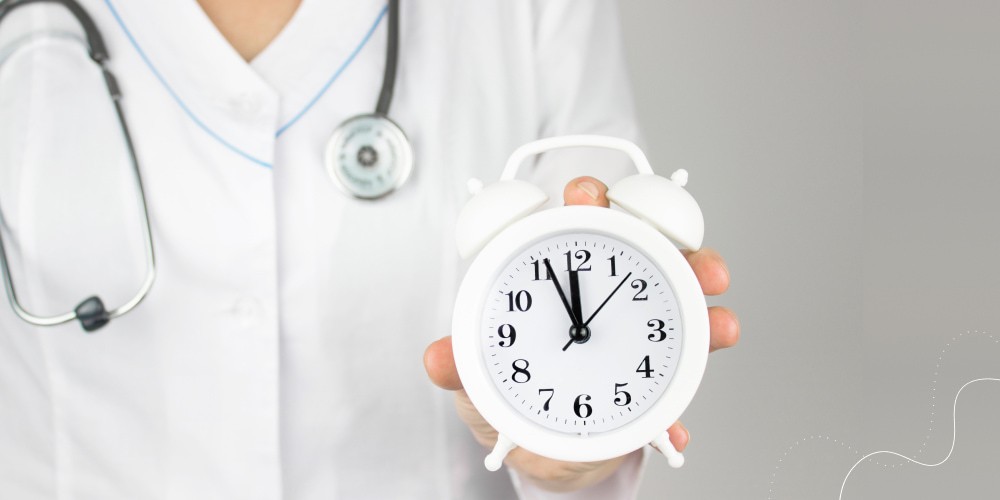Headaches after both hemorrhagic and ischaemic strokes are typical symptoms that go away within 72 hours after stroke, although some cases allow for up to 7 days. Neurologists explain this syndrome as quite a natural consequence of a vascular catastrophe. The cause of these post-stroke headaches, which is the most common secondary headache in elderly patients, is a cerebral vascular pathology in which blood circulation is impaired, and the blood supply to the brain tissue is impaired.
Medication can help you manage pain faster, recover from a stroke, and prevent relapse. An important point of therapy is the fight against atherosclerotic changes in blood vessels and cerebral ischemia. It is also necessary to monitor the manifestations of concomitant diseases, for example, arterial hypertension and diabetes mellitus. In this case, timely visits to a neurologist should be observed. In addition, the rehabilitation of the patient is needed. It will help to put in order as many of his bodily functions as possible.
In this helpful article, we uncover other existing reasons why headaches appear after a stroke. We also provide examples of the necessary diagnostics to determine the main cause of headaches. In addition, you will learn what treatment can help get rid of this unpleasant symptom.
Causes of Headaches After a Stroke
Post-stroke headaches can occur due to:
- Stroke treatment. There are situations in which fairly harmless drugs can cause headaches after a stroke. Dipyramidol or curantil in the composition can lead to similar side effects. The main thing is not to quit treatment but to report the headache to your doctor. He will have to find other antiplatelet agents that work just as effectively but do not give a similar effect.
- Meteosensitivity. This is not a myth but a scientifically proven fact – some people react much more strongly to sudden fluctuations in pressure and temperature. Unfortunately, medicine is absolutely powerless here in the long run. All that can be done: reduce pain with specially prescribed drugs.
- Tightening of the neck muscles. If you were not comfortable lying in the hospital during the ischemic stroke attack, you could have a tightness of the muscles in the cervical spine. It, as a rule, stops important vessels that go to the brain, and this, as we have already found out, is the first step towards turning off part of the brain centers and headache as a symptom. You can solve this problem: it is enough to be like a special therapeutic massage (not to a salon, but to a massage therapist appointed by a doctor). Also, do not abandon physical therapy, which you are likely to be prescribed by a doctor. If there was no such item in the appointment, you should clarify this point – correctly performed gymnastics can change your life for the better.
- Stress. Just imagine: your brain has not yet fully recovered from the shock, and you are already loading it to the fullest with new experiences, trying to return the exhausted body to its usual mode as soon as possible. Not everyone can endure such a load. In addition to the stress during rehabilitation, depression and fear of not fully recovering can declare themselves – believe me, if you were able to cope with this condition, then you are lucky because not all patients manage to escape from gloomy thoughts. In any case, if the cause of the headache is stress, this is found using special tests of a neuropsychological nature.
Don’t withdraw into yourself after an attack. Talk to your friends as often as possible, and plan how you will return to normal life after rehabilitation. Let everyone know that you are not ready just to give up, and, importantly, try to believe in yourself.
Important: do not tolerate pain. It is better to take sedatives prescribed by your doctor so that you do not have any problems afterward than to give up effective drugs at the very beginning and suffer from headaches for the rest of your life.
Diagnosis of Headaches After a Stroke
Only a specialist can find out the root cause of the appearance of post-stroke headaches, who will prescribe various procedures and conduct the necessary examination.
It can be:
- measuring pressure, tracking its changes to exclude the possibility of developing hypertension;
- general blood analysis;
- a blood sugar test, identifying its effect on the intensity of pain;
- ECG;
- magnetic resonance imaging;
- psychiatrist and psychologist consultation for depressed patients.
After receiving and sorting the necessary information about the nature of the pain and obtaining the results of analyses and examinations, the specialist prescribes a treatment that considers the individual course of symptoms in each patient. Particular attention should be paid to the psychological state of the patient who has suffered a stroke. Often the head hurts after a stroke precisely because of the lurking depression.
A stroke almost always comes unexpectedly. After it, a fully able-bodied person becomes forever or in a little while constrained in movements, and cannot work and be useful to society. One can see life as entirely useless. In this case, the headache may be the only sign by which the depressive state of the patient is determined.
According to many observations, those patients who constantly communicated with relatives and felt support from them almost did not suffer from headaches.
Treatment of Post-Stroke Headaches
In the case of headaches after both hemorrhagic and ischemic stroke, treatment may consist of symptomatic use of conventional analgesics or non-steroidal anti-inflammatory drugs.
Doctors always recommend their patients not lose hope and strive for recovery. It is known that restoring physical activity and eliminating headaches is possible, even when the case is severe. Headaches after a stroke subside over time, and the main conditions for recovery are moderate physical exertion on the area of the injured side. That is, the main task of medicine is always to rehabilitate the patient.
The main principles for recovery are the timeliness of the recovery course, and it is also especially important to observe the systematic nature of the treatment, and the duration of such rehabilitation. A stroke disrupts blood circulation, and brain cells die as nutrients are depleted. This condition is difficult to describe, and it is necessary to constantly provide the patient with optimal medical care secured by the support of the family.
Usually, treatment of similar syndromes arising from the postponed stroke pathology begins with the relief of an acute condition. In this case, treatment may consist of symptomatic administration of conventional analgesics or non-steroidal anti-inflammatory drugs.
It is customary to refer to such drugs:
- Analgin
- Aspirin
- Nise
- Ketorol
- Movalis
Pain can be treated with those analgesic drugs that are available in every home (family) first aid kit.
At the same time, when choosing a treatment for a particular patient with one or another drug, it is undoubtedly better to consult a doctor who knows the patient’s medical history. After all, it is the doctor who, taking into account all the nuances, can choose the optimal treatment for pain syndrome for a particular patient who has suffered a brain stroke.
If the headache cannot be relieved with analgesics, if the patient has other symptoms of depression, it may be necessary, in consultation with the doctor, to consider a course in which treatment is carried out with antidepressants. Such drugs as Amitriptyline, the same Fluoxetine or Sertraline.
And the so-called group of anticonvulsants – drugs like Finlepsin, Lyrica, Gabapentin, and others – can be considered the last group of medications that are appropriate for the course treatment of regular headaches in post-stroke patients.
In any case, with a strong post-stroke pain syndrome, the doctor should use the selection method to prescribe the most appropriate treatment options.
Stroke Recovery Process
Recovery periods:
- The acute rehabilitation phase begins within 24 to 48 hours of a stroke in an emergency hospital. The duration of this period is about 3-4 weeks;
- The early recovery period is the first six months after a stroke. But for the restoration of motor functions, it is very important to start treatment in the first three months. During this period, it is important to contact a rehabilitation center to approach recovery comprehensively;
- The late period is from six months to 1 year after a stroke. Rehabilitation can be carried out both on an outpatient basis and at home;
- After one year, the residual (remote) period is carried out both at home and in a medical facility.
Time plays one of the main roles in the recovery process, so the earlier you start rehabilitation, the higher its effectiveness. After completing rehabilitation, a person can quickly return to an acceptable life, getting rid of depression, which is one of the causes of post-stroke headaches.
How Long Does it Take to Recover from a Stroke?
There is no single recovery period after hemorrhage because the rehabilitation time depends on the size and location of the affected area, the type of stroke, as well as the time that has passed since the onset of the disease to the provision of specialized care. Estimated terms of rehabilitation can be presented as follows:
- Stroke with a minimal neurological deficit – mild paralysis of the face, limbs, visual impairment, impaired coordination, dizziness. Partial recovery occurs in 1-2 months. Complete recovery is possible in 2-3 months but depends on the patient’s rehabilitation potential.
- Stroke with a severe neurological deficit – gross paralysis of the face, limbs, severe coordination disorders. The patient becomes able to self-care after six months, and full recovery takes years.
- Severe hemorrhagic and ischemic strokes with persistent neurological deficits lead to disability of the patient due to paralysis and other defects. Partial recovery is possible in 1-2 years. With a severe neurological deficit, complete recovery is impossible due to the necrosis of significant clusters of brain neurons, the functions of which cannot be taken over by neighboring cells.
It is important for the patient to realize that recovery from any stroke should not be over. Short daily treatments will help get rid of headaches after a stroke and prevent new stroke attacks, restoring former skills and qualities.
FAQ
- What is post-stroke syndrome?
Post-stroke pain syndrome is heterogeneous from the point of view of pathogenesis. In its structure, one can distinguish between central pain, post-stroke pain, pain associated with spasticity, shoulder pain, tension headaches, and complex regional pain syndrome.
- What helps a headache after a stroke?
Post-stroke headaches can be relieved by painkillers such as paracetamol. It is also better to drink plenty of water, excluding coffee and alcohol.
- What are the consequences after an ischemic stroke?
More than half of people after a stroke complain of prolonged headaches. This pain can occur when the somatosensory analyzer is damaged at any level – the cerebral cortex, thalamic nuclei, structures of the medulla oblongata, and spinal cord.
- How common are headaches after a stroke?
Headache occurred in 6%–44% of the ischemic stroke population. It is also noted that some of them have become chronic.
- What are the causes of ischemic and hemorrhagic stroke?
Ischemic stroke occurs due to the formation of a blood clot or clot, which clogs the brain’s arteries and disrupts the blood supply. Hemorrhagic stroke occurs due to the rupture of a cerebral vessel, resulting in blood accumulating in adjacent tissues.
- What is the most dangerous type of stroke?
Non-traumatic subarachnoid hemorrhage is less common, but this type of stroke is the most dangerous – almost 50% of cases are fatal. And even with early diagnosis and timely adequate treatment, a person is more likely to remain a severely disabled person for life.














Please, leave your review
2 Comments
Paul Davies
31/01/2024
I had an ischemic stroke almost two years ago and it has taken a lot out of me physically and I have gained back about fifty pounds..which I had spent two years losing!
I am working on that one but also I wake up with headaches on the right side of my head.
They diminish after an hour or two. My stroke was on the right and affected the left side of my body ,physically.
I just had my annual MRI, here in Florida and it came back all ‘patent’, thankfully!
I worry a little about having another, more serious stroke as I would like to travel to more remote countries out East and also because of the morning headaches.
I did suffer from a major hurricane (Ian), 16 months ago and have been fighting the insurance company for more money ever since, to fix my house as it is completely unlivable and have had to move twice to different accommodation in the meantime.
So stress has also been a factor!
Thank You for letting me vent a little!
I should mention that my wife and kids have been a great support through this period.
Cecilia Crystal
28/02/2024
I am so worried about my recurrent headaches. Before my stroke I had a headache every morning, for a week
The location was near the top of my head, left side. My stroke was on the right side. I hear it’s common to have another stroke, after the first so I’m always worried.
Write a comment: